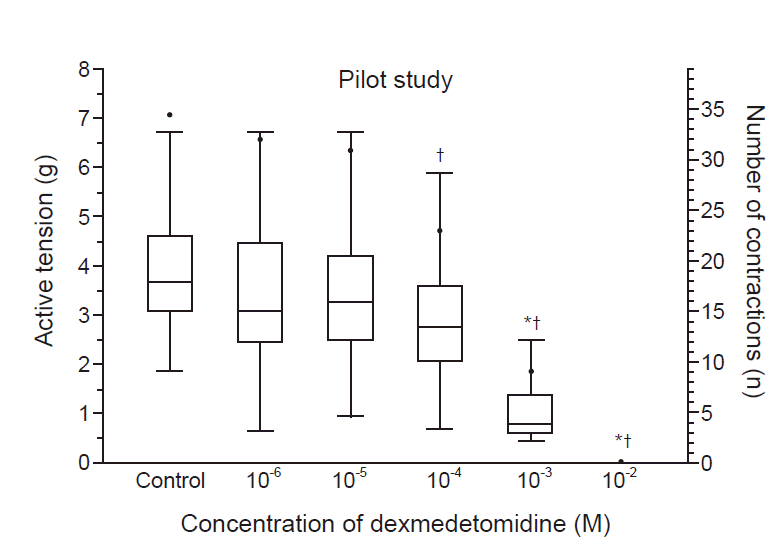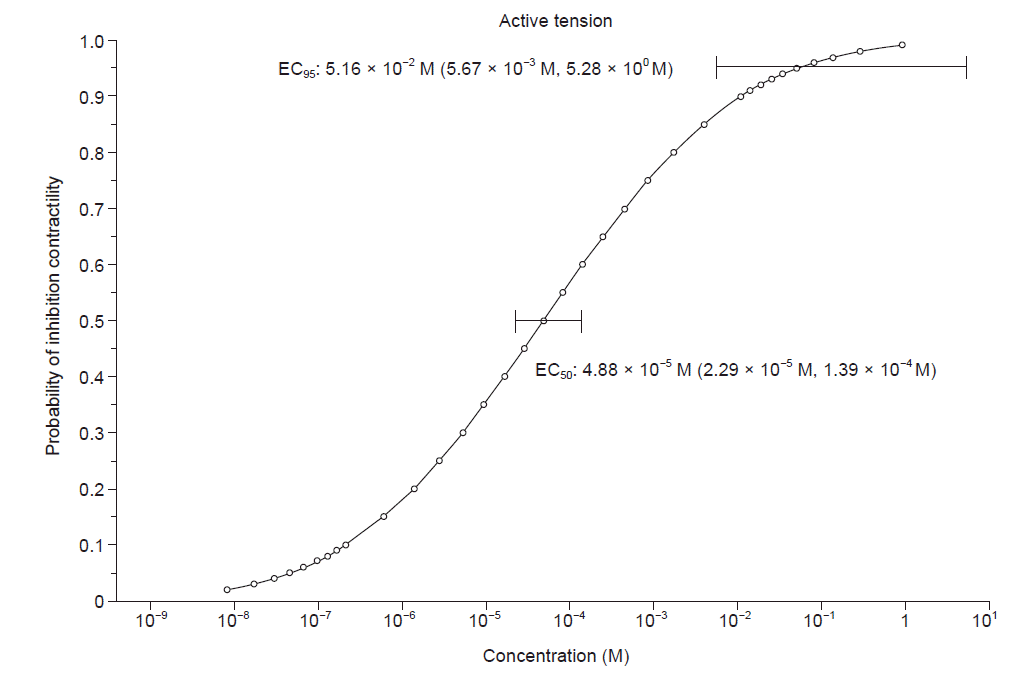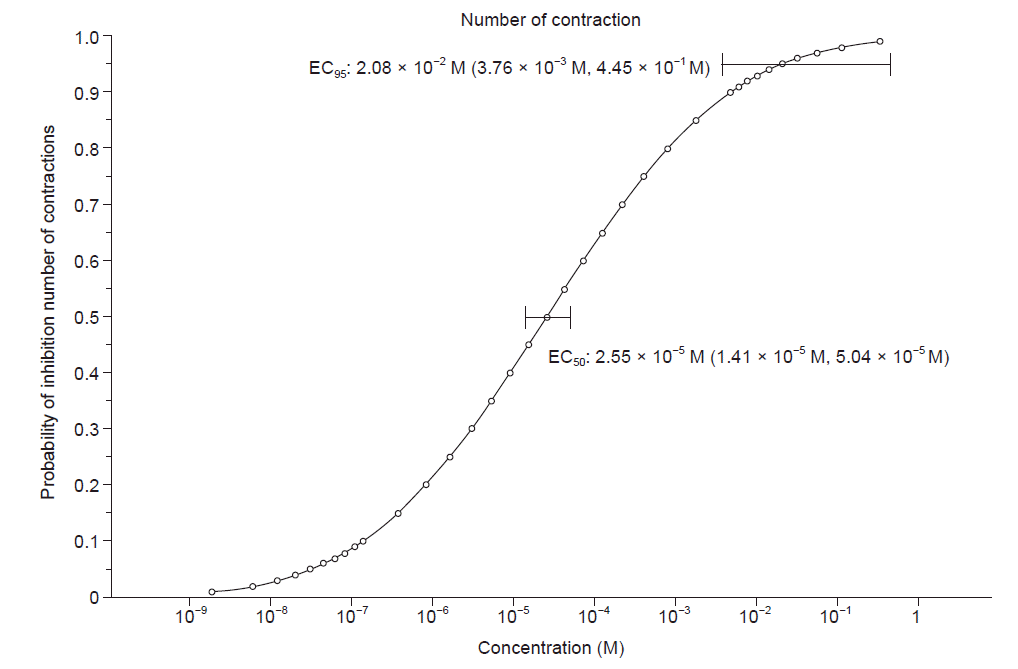1. Lee S. Dexmedetomidine: present and future directions. Korean J Anesthesiol. 2019; 72:323–30.
2. Nair AS, Sriprakash K. Dexmedetomidine in pregnancy: review of literature and possible use. J Obstet Anaesth Crit Care. 2013; 3:3–6.
3. Mendoza Villa JM. Dexmedetomidine as adjunct for analgesia in labor: a report of two cases. Rev Colomb Anestesiol. 2012; 40:79–81.
4. El-Arab NKE, El-Hawary SI, El-Zeftawy AE, Mohammed RM. Dexmedetomidine in preeclamptic patients undergoing caesarean section under general anesthesia. Tanta Med J. 2017; 45:220–5.
5. Mishra N, Jain A, Sharma M. Intravenous dexmedetomidine for labour analgesia in women with preeclampsia. J Evol Med Dent Sci. 2016; 5:3408–11.
6. Wang J, Han Z, Zhou H, Wang N, Ma H. Effective loading dose of dexmedetomidine to induce adequate sedation in parturients undergoing caesarean section under spinal anaesthesia. Turk J Anaesthesiol Reanim. 2017; 45:260–3.
7. Karaman S, Evren V, Firat V, Cankayali I. The effects of dexmedetomidine on spontaneous contractions of isolated gravid rat myometrium. Adv Ther. 2006; 23:238–43.
8. Sia AT, Kwek K, Yeo GS. The in vitro effects of clonidine and dexmedetomidine on human myometrium. Int J Obstet Anesth. 2005; 14:104–7.
9. Öcal I, Güneş Y, Mert T, Özcengiz D, Günay I. Dexmedetomidine modifies uterine contractions in pregnancy terms of rats. Indian J Pharmacol. 2013; 45:168–73.
10. Weerink MAS, Struys MMRF, Hannivoort LN, Barends CRM, Absalom AR, Colin P. Clinical pharmacokinetics and pharmacodynamics of dexmedetomidine. Clin Pharmacokinet. 2017; 56:893–913.
11. Kim M. Study on adrenoceptors of the rat uterus. Hanyang J Med. 1982; 2:383–93.
12. Kilkenny C, Browne W, Cuthill IC, Emerson M, Altman DG; National Centre for the Replacement, Refinement and Reduction of Amimals in Research. Animal research: reporting in vivo experiments--the ARRIVE guidelines. J Cereb Blood Flow Metab. 2011; 31:991–3.
13. Agoston DV. How to translate time? The temporal aspect of human and rodent biology. Front Neurol. 2017; 8:92.
14. Chung CD, An TH, Jung KT, Lee TH. The effects of etomidate on the contraction of pregnant rat uterine smooth muscle. Korean J Anesthesiol. 2009; 57:84–7.
15. Lee S, Hwang GB, Baik CY. The relationship of the estimates of effective concentration calculated by logit, probit, and sigmoid Emax. Korean J Anesthesiol. 2002; 43:345–7.
16. Drew GM, Whiting SB. Evidence for two distinct types of postsynaptic alpha-adrenoceptor in vascular smooth muscle in vivo. Br J Pharmacol. 1979; 67:207–15.
17. Gertler R, Brown HC, Mitchell DH, Silvius EN. Dexmedetomidine: a novel sedative-analgesic agent. Proc (Bayl Univ Med Cent). 2001; 14:13–21.
18. Kitazawa T, Maezono Y, Taneike T. The mechanisms of alpha(2)-adrenoceptor agonist-induced contraction in longitudinal muscle of the porcine uterus. Eur J Pharmacol. 2000; 390:185–95.
19. Berg G, Andersson RG, Ryden G. Alpha-adrenergic receptors in human myometrium during pregnancy. Am J Obstet Gynecol. 1986; 154:601–6.
20. Arrowsmith S, Wray S. Oxytocin: its mechanism of action and receptor signalling in the myometrium. J Neuroendocrinol. 2014; 26:356–69.
21. Kim DJ, Hwang MH, An TH, Jung KT. The relaxant effect of nicardipine on the isolated uterine smooth muscle of the pregnant rat. Anesth Pain Med. 2019; 14:429–33.
22. Kyozuka M, Crankshaw DJ, Crankshaw J, Berezin I, Kwan CY, Daniel EE. Alpha-2 adrenoceptors on nerves and muscles of rat uterus. J Pharmacol Exp Ther. 1988; 244:1128–38.
23. Fairbanks CA, Stone LS, Wilcox GL. Pharmacological profiles of alpha 2 adrenergic receptor agonists identified using genetically altered mice and isobolographic analysis. Pharmacol Ther. 2009; 123:224–38.
24. Gáspár R, Gál A, Gálik M, Ducza E, Minorics R, Kolarovszki-Sipiczki Z, et al. Different roles of alpha2-adrenoceptor subtypes in non-pregnant and late-pregnant uterine contractility in vitro in the rat. Neurochem Int. 2007; 51:311–8.
25. Hajagos-Tóth J, Bóta J, Ducza E, Samavati R, Borsodi A, Benyhe S, et al. The effects of progesterone on the alpha2-adrenergic receptor subtypes in late-pregnant uterine contractions in vitro. Reprod Biol Endocrinol. 2016; 14:33.







 PDF
PDF Citation
Citation Print
Print



 XML Download
XML Download